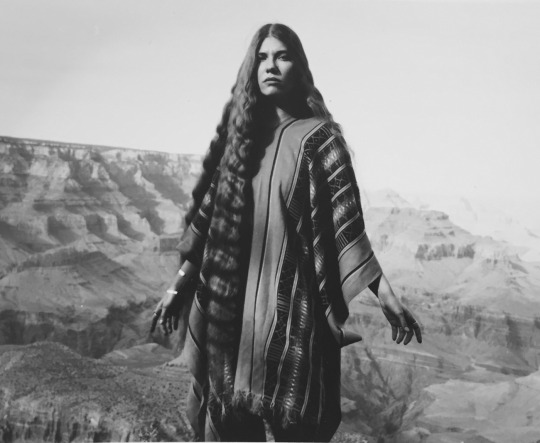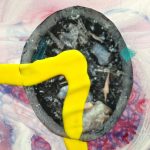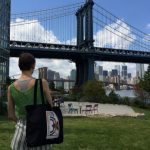IAP Interview: Terence Trouillot with artist Joana P. Cardozo
“In my work, as far as I’m concerned, I try to comply with my desires and follow my own truth and my heart. By doing that, hopefully, I might be able to produce some enlightening work.”
Terence Trouillot and Joana P. Cardozo recently met as participants of the 2016 Immigrant Artist Mentoring Program. In an email interview, Terence asked Joana about her upcoming project, The Future Perfect, an exhibition she co-curated with fellow artists and curators, opening this fall at the Rita K. Hillman Gallery at ICP and at Photoville in Brooklyn Bridge Park.
TERENCE TROUILLOT: So tell me, how did this idea come about? How did you get involved in this project and how does your practice relate to this exhibition?
JOANA P. CARDOZO: After I graduated from the one-year program at the International Center of Photography (ICP) we had the final show of the year, which included works by all 80 graduates of the program. The exhibition space at ICP, the Rita K Hillman Gallery, is amazing, but featuring 80 artists in one exhibition was a challenge. The limitation of space required that each artist only display one or two pieces of artwork. I started a discussion with Marina Berio, Chair of the General Studies Program in Photography, and some of my peers, including the photographer Rick Schatzberg, one of the curators of The Future Perfect, about curating an ICP alumni show. We wanted to give each artist the opportunity to display at least five images, allowing the viewer to get a better sense of the artists’ work. We had to postpone the idea for a while until the end of last year, when we invited Yola Monakhov Stockton, Assistant Professor of Photography at SUNY Buffalo State College, to join the curatorial team. She came up with the theme for the show: The Future Perfect.
In my recent work, called Blueprints, I curated objects inside my subjects’ homes to create a portrait of the subject, without depicting his or her face or bust. I believe my interest in curatorial projects parallels my own artistic practice; therefore, curating The Future Perfect seemed to be the natural path to follow.

TT: I know your work, specifically the Blueprint series, has a narrative process that involves a lot of looking and observing other people and spaces. Do you see this narrative unfolding within the images you produce? Or do you tell a completely different narrative, something entirely new?
JC: I tell the story of my subject’s lives by using their objects and rearranging them in a way to create a narrative. Sometimes the narrative is fairly straightforward. You can observe this in Blueprint Seven (2016), where I portray a family whose lives revolve around three young children. Sometimes, however, I completely change the narrative. For example, Blueprint Nine (2016) is a portrait of a visual artist whose work incorporates mirrors and distortion, a method I appropriated from her. The result is an image that is harder to read. For me, Blueprints gravitates towards the notion that our home is the reflection of ourselves. It does not depict the subjects’ faces but rather presents a reflection of each person’s individuality.
TT: So I’m interested in the title and this idea of “future perfect.” There is, of course, this double entendre happening: on the one hand you have this allusion to language and time (i.e. the grammatical tense), but there is also this idea of a “perfect future” and what that looks like. I’m wondering if there is something to be said about the future of photography and digital images in light of the abject images of violence and hate that permeate the news. What are some of the possibilities for photography to offer the world a better future? What does that future look like to you? How does this show respond to this question?
JC: The title is actually The Future Perfect. We had some discussion on whether to include the article “the” in the title of the exhibition or not. In the end, we decided to keep it. In my opinion, the use of “the” makes the title stronger. It is now a statement. I don’t believe that photography has a responsibility to offer the world a better future. Photography is just a medium, as paint is a painter’s medium. The painter decides what to show; a smooth and conforming image or a disturbing and questioning one. The world needs both types of imagery. It would be misleading to create a perfect world full of pretty images, or a depressing, false world full of hate. Also, violence and hate pre-date the first photographic process that took place in 1839. This show responds to the question of the possibilities of photography by displaying both sides of the coin: the serene Monets and the restless Van Goghs. On one hand, we have Kristen Dorata’s project Erin (2016) showing the ethereal beauty of a landscape merging with a gorgeous girl, giving these photographs a timeless quality. On the other hand, we have Loubna Mrie and Miguel Winograd’s project, The Uprooting (2015), documenting the Syrian refugee crisis, and Júlia Pontés’s Oh Minas Gerais (2016), a project focusing on the social and economic consequences of the mining industry in Brazil, including the environmental disaster in Mariana. Regarding the future, there’s a Brazilian song that I love by Elis Regina called Como Nossos Pais (1976) that says, “My pain is to realize that in spite of everything we did, we are still the same and we live as our parents.” I’m not saying I’m a pessimist, I just think that the future will look like the present.
TT: To go back to this idea of time and language, the first line of the press release reads: “Photographs are written in the future perfect tense: this will have been.” This makes me think of how the photographic image as an object that is no longer static but dynamic, almost permeable, constantly changing, which is in direct opposition to the automation of the medium, this sort of “insta-"capture of the present into the past. How does the photographic image make room for new beginnings?
JC: Fred Ritchin, the Dean of the School at ICP, said, “If a young person wanted to become a war photographer, we have hundreds of books showing how others have photographed war. But what if a young person wanted, instead, to become a photographer of peace? The genre, unfortunately, does not yet exist.” Between abject images of violence, to quote you, and images of peace, the balance is definitely tipping towards the former. Not because there is a lack of optimistic situations to be portrayed by photographers of peace, but because both media and image consumers want to see images of violence. As photographers, we need to break this cycle so that the image-makers of today can create new beginnings for the future.
TT: In Towards a Philosophy of Photography, the critic and philosopher Vilem Flusser described the "photographic universe” as a space of redundancy: a constant barrage of the same images over and over again. As such he says that “the challenge for the photographer [is] to oppose the flood of redundancy with informative images.” Do you believe that to be true, and if so, how do you as an artist, as a photographer, work with informative images?
JC: I believe that to be true. Flusser also compared the act of photographing to the act of writing. Photography is a language, like Portuguese or music. One can argue that both the “Writing Universe” and the “Music Universe” are spaces of redundancy as well, where we are constantly bombarded by the same ideas and sounds over and over again. It’s easy to get trapped in the old and be repetitive, but there is material out there for unique ideas, sounds, and images. In my work, as far as I’m concerned, I try to comply with my desires and follow my own truth and my heart. By doing that, hopefully, I might be able to produce some enlightening work.
The Future Perfect will be on view at the Rita K. Hillman Gallery at the ICP School from September 6 to November 20, and at Photoville in Brooklyn Bridge Park from September 21 to 25. An opening reception will take place at the ICP School on September 16 at 6:00 PM.
Joana P. Cardozo is an artist and winner of the Juror’s Choice Award at the 2015 Filter Photo Festival for one of her images in Blueprints. Blueprints also received two honorable mentions at the Moscow International Photo Awards and was selected for a solo exhibition at ArtPrize, a major international art competition in Grand Rapids, MI. Check out her work at www.jpcardozo.com.
Terence Trouillot is an art writer, editor, and BOMB’s Andrew W. Mellon Fellow for Oral Histories. He holds a MFA in Art Writing and Criticism from the School of Visual Arts and a BA in History from Wesleyan University. He is currently a mentor for the New York Foundation for the Arts 2016 Immigrant Artist Program.
This interview originally appeared in the ConEdison Immigrant Artist Program Newsletter #84. Subscribe to this free monthly e-mail for artist’s features, opportunities and events here.
Images, from top: Joana P. Cardozo, Blueprint Three – Self-Portrait, 2016; Kristen Dorata, South Rim, 2016





